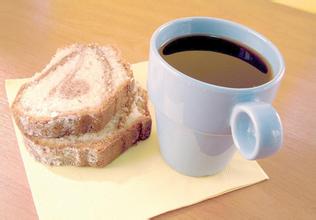Arab Bourbon Coffee Tree-Galapagos Islands Coffee-Hasunda Coffee Garden
Through the reclamation of early land, the area of the coffee plantation doubled. Because of the unique role of the Galapagos Islands in the course of history, the Ecuadorian government has turned the archipelago into a national park and no longer allows the land to be reclaimed as new agricultural land. and the introduction and use of chemical fertilizers, pesticides, herbicides and other chemicals are strictly prohibited, so coffee in the Galapagos Islands is recognized as a natural product as the world coffee industry is moving towards a targeted mass production model. So a coffee industry like San Cristobal, which is small and of uncertain quality, is in trouble and is likely to be forced to give up unprofitable.
In the early 1990s, however, the Gonzalez family bought Hasunda Coffee Park. The local microclimate caused by the Humboldt current (Humboldt Current), strong equatorial sunlight and sharp temperature changes (43 ℃ at sea level and 10: 16 ℃ at 275m above sea level) provided a unique advantage that prompted the Gonzalez family to expand the coffee plantation in 1875. Ecuador's indigenous Ma Corvos has planted about 100 hectares of Arabian bourbon coffee trees at the Hasunda Coffee Garden (Hacienda El Cafetal) in San Cristobal. The elevation of the plantation is between 140m and 275m, and the climate of the area is equivalent to that of 910m to 1830 m inland, so the gradient is suitable for the growth of high acidity extra hard coffee beans (SHB), which is also the key to the high quality coffee grown in Saint Crst ó bal. St. Cristobal is a larger island in the Galapagos Islands (Galapagos Islands) and the only one in the archipelago with plenty of fresh water. At an elevation of 410m above sea level, there is a small lake called El.Junco. Several streams flow along the rocks and volcanic rocks on the southern slope of the island. Mineral-rich fresh water moistens the land of St. Cristobal, making the soil moist and fertile forever.

Important Notice :
前街咖啡 FrontStreet Coffee has moved to new addredd:
FrontStreet Coffee Address: 315,Donghua East Road,GuangZhou
Tel:020 38364473
- Prev

Coffee growing area of Dominica introduces Santo Domingo coffee
Coffee in Dominica varies slightly in taste according to the altitude of the region where it is grown, with sour but rich taste in the highlands, and less sour and smoother taste in the lowlands. On the other hand, the high-quality coffee beans produced by some Dominican estates have a rich aroma, mellow taste, moderately bright sour taste, and are often used with famous Puerto Rican or Jamaican coffee.
- Next

Smooth, sweet Venezuelan coffee beans from San Cristobal
Venezuelan coffee beans taste smooth and sweet. Venezuelan coffee is lighter in weight, fuller in grain, less sour, and sweeter and darker than other Latin American coffees. Venezuela sells socialist coffee Venezuelan cafes Recently, in Venezuela's state-owned coffee chain Venezuelan cafes, there has been a particularly interesting phenomenon: the store is for Gu
Related
- Does Rose Summer choose Blue, Green or Red? Detailed explanation of Rose Summer Coffee plots and Classification in Panamanian Jade Manor
- What is the difference between the origin, producing area, processing plant, cooperative and manor of coffee beans?
- How fine does the espresso powder fit? how to grind the espresso?
- Sca coffee roasting degree color card coffee roasting degree 8 roasting color values what do you mean?
- The practice of lattes: how to make lattes at home
- Introduction to Indonesian Fine Coffee beans-- Java Coffee producing area of Indonesian Arabica Coffee
- How much will the flavor of light and medium roasted rose summer be expressed? What baking level is rose summer suitable for?
- Introduction to the characteristics of washing, sun-drying or wet-planing coffee commonly used in Mantenin, Indonesia
- Price characteristics of Arabica Coffee Bean Starbucks introduction to Manning Coffee Bean Taste producing area Variety Manor
- What is the authentic Yega flavor? What are the flavor characteristics of the really excellent Yejasuffi coffee beans?

